How ClickUp Generates $278.5M ARR
In 2017, ClickUp entered one of the most competitive industries. In just 7 years, they achieved significant market share—read here to find out how.
Hi, it’s Andreas, and I’m back with Growth, my newsletter that dives into the funnels and growth tactics of today’s top startups. Today, we’re covering ClickUp, and I can tell you—this one is interesting. So, press subscribe if you haven’t already, and let’s dive in.
In a crowded market, ClickUp has captured a notable 17.8% share of the sales-productivity market since its launch (6sense.com).
From the start, the founders of ClickUp knew they were entering a highly competitive industry. They understood the need to take a different approach.
And they did.
ClickUp launched in mid-2017 and, within two years, achieved $20 million in annual recurring revenue (ARR) without any external funding or marketing budget. From 2020 to 2022, it consistently doubled its revenue, reaching $278.5 million by 2024.
ClickUp's success is rooted in its focus on brand, user experience, and design. The company prioritized releasing new features faster than its competitors, driven by input from its community.
They stand out through bold actions, such as calling out competitors and dedicating a large part of their user acquisition strategy to content, focusing on:
Humor
Education
Let’s explore how this approach shapes ClickUp’s overall strategy.
How ClickUp's (Sales) Funnel Works
ClickUp’s growth is powered by a Product-Led Growth (PLG) model, where the product itself is the main focus.
The goal is to let users try the product and experience its value—typically through a free trial or freemium account—before encouraging them to upgrade to paid plans.
This approach contrasts with the traditional Sales-Led model, which prioritizes monetization before customers interact with the product.

Here, ClickUp uses a freemium account approach as part of its strategy.
But instead of focusing on individual users, ClickUp targets entire organizations by trying to onboard as many coworkers from a company as possible—a process we’ll explore in more detail later.
Unlike its early days, ClickUp now invests heavily in marketing. This includes hosting virtual events, running ads, and securing sponsorships.
Despite these efforts, content remains the cornerstone of its strategy to drive users into freemium accounts. From there, ClickUp’s PLG system works to convert them into paying customers.
And this is where ClickUp stands out.
To figure this out, I did a full breakdown of the funnel, which you can find at the end of the article:
[IMAGE]
What I want to focus on in this article is where ClickUp does things differently. We will have look at:
ClickUp’s Content Strategy – How it creates awareness and attracts new users.
ClickUp’s PLG Strategy – How it converts free users into paying customers.
How ClickUp Leverages Content to Acquire Users
As mentioned, content plays a key role in ClickUp’s user acquisition strategy. The focus on humor and education is especially evident in its social media presence and SEO strategy.
ClickUp’s Socials
It’s no surprise that ClickUp is active on every major social media platform.
What’s noteworthy, however, is how they tailor their strategy for each channel.
For example, on LinkedIn:
ClickUp adapts to LinkedIn’s professional tone.
On ClickUp’s LinkedIn channel, they share a variety of content formats, such as LinkedIn articles, specifically designed to educate their audience.
And a format called ClickUpdates keeps users informed about product news, feature releases, and more.
They also share meme-like content to boost reach, aligning with their approach to stand out through humorous content.
This approach allows ClickUp to target audiences at different stages:
Cold Audience (= have no idea about ClickUp) – Reached through memes to grab attention.
Warm Audience (= are aware of ClickUp) – Reached through educational content, often linked to ClickUp.
Hot Audience (= use ClickUp already or are in the decision process) – Reached through ClickUpdates, providing product news and feature updates.
But if we stick to humorous content, things get even more interesting on Instagram, Facebook, and YouTube. This is where ClickUp takes its humor-focused strategy to the next level.
On Instagram and Facebook, for example, ClickUp runs two separate accounts, named:
“ClickUp” – This account shares product updates, news, and other company-related information, similar to their LinkedIn strategy.
“ClickUp Comedy” – This account is dedicated exclusively to humor and memes.
On ClickUp Comedy, you’ll find parody videos showcasing classic office clichés, jokes, and funny content—all designed to address teams and organizations.
Unfortunately, I cannot find any information on how much traffic this approach generates. However, we can look at the account statistics.
But it seems that the comedy pages are newer. The comedy page on Instagram was created in June 2024, and to date, it already has 134k followers.
Sure, the ClickUp Comedy account likely benefited from cross-promotion by the original ClickUp account, which currently has 242k followers. Nevertheless, 134k followers in such a short time is a significant achievement.
Judging by the views—some exceeding 3 million—the strategy seems to be working well.
But ClickUp's actual goal is to drive people to a dedicated landing page, which is linked in the bio of each social account and beneath the content.
The landing page focuses entirely on office humor clips. It serves as a library where all the clips posted on social media are organized, resembling platforms like YouTube or Netflix.
And the page's primary goal is to promote ClickUp’s tool and encourage users to sign up.
This approach likely drives a significant amount of traffic to ClickUp’s site, as it’s not something commonly seen in the B2B world.
And I’m sure this is reflected very well in user sign-ups.
But stepping aside from the funny things, another area where ClickUp excels is education. This is where its SEO strategy comes into play.
ClickUp’s SEO Strategy
In its early days, when ClickUp was bootstrapping the tool, the team placed a strong emphasis on SEO.
According to this Reddit thread, they consistently published at least one article per day for years.
This effort laid a solid foundation, helping ClickUp generate significant monthly traffic over time.
And is now a big part of its traffic source, driving thousands of monthly visitors to the site, as they rank for many keywords in the number 1 position on Google.
The blog is still very active, though not with the same daily frequency as in the early days.
Another SEO tactic ClickUp uses, which aligns with their strategy of calling out competitors, is publishing comparison articles about their competition.
These articles openly position ClickUp as the number one choice. Unsurprisingly, this approach works well and ranks highly for ClickUp in search results.
This is because, with each click on one of the search result, you’re directed to a landing page that offers a detailed overview, clearly highlighting the differences between ClickUp and its competitors.
💡 Google prioritizes content that helps answer people’s questions easily. Comparison tables are a great example of this, as they provide clear, concise information that improves rankings.
→ If you want to adopt this strategy, make use of comparison tables - like ClickUp does.
This, in total, drives more than 3.9 million in monthly traffic to the site, with 99.4% being organic.
Before anyone complains:
Of course, with a company of this size, a significant portion of its traffic comes from other sources, such as news coverage or word-of-mouth referrals. Additionally, ClickUp invests a substantial budget in marketing. So, while the traffic numbers aren’t purely a result of their organic strategies, it’s undeniable that they are making a strong push in this area.
Oh… and if you’re wondering whether they use humorous content in their ads as well:
For instance, here’s an example of a Google Display Network ad:
From Freemium to Paying Users: ClickUp’s Product-Led Growth (PLG) Strategy
After exploring how ClickUp generates traffic, let’s have a look at how it converts it.
Here, it’s important to differentiate between solo users/SMBs and how ClickUp manages enterprise customers.
How ClickUp Turns Solo Users/SMBs into Paying Customers
The PLG model aims to let solo users and smaller companies onboard and upgrade themselves without the help of the sales or support team—allowing those teams to focus on larger customers.
In this regard, ClickUp’s main strategy is entirely focused on driving people into its freemium model or free trial.
This is why ClickUp’s primary call-to-action, visible everywhere on the site, is “Get Started. It’s FREE” (or a minor variation of it).
(btw - I love the “Free Forever. No Credit Card.” message—it builds additional trust.)
Whether it’s:
On the homepage
On the blog pages
On the comedy landing page
On the comparison page
On other landing pages
Every page is optimized to drive free users.
💡 I see this far too often—companies overwhelm users with too many different calls to action. If your website is meant to drive sales, it should focus on getting the user to take one, or at most two, clear actions.
Take ClickUp as an example. Their entire strategy is built around driving free users into the tool. This means they have one clear call to action, which avoids confusing the user.
For you: Use. Fewer. Call. To. Actions.
Once you click the button, you’re taken to the login screen, where you can sign up for free.
Here, ClickUp reinforces the tool's value for organizations by focusing on upselling within a company.
For example, when I entered my personal email address, I received this prompt:
This approach aligns perfectly with ClickUp’s upselling strategy within organizations.
Because:
More coworkers = more seats = more revenue.
And this strategy is a perfect fit for its pricing model.
We start with the freemium model on the left-hand side, where you get most of the features needed to use ClickUp effectively on your own. However, as soon as you want to use it collaboratively, ClickUp requires you to upgrade to access most of the collaboration features.
The pricing is tiered for small, mid-sized, and large teams, and it’s charged on a per-user, per-month basis.
The Onboarding
Once a user is inside the tool, ClickUp focuses on two main objectives:
A) Making the onboarding process as simple as possible, allowing users to start using the tool and learning on their own without requiring training or sales assistance from ClickUp.
B) Encouraging users to onboard additional team members as quickly as possible.
The process starts with a seven-step onboarding funnel designed to help users set up the basics.
Fun fact: In the 4th step, you’re prompted once again to invite more people.
Whether you invite people or not, once you complete the funnel, you’re shown a detailed video that explains the most important features and how to use them.
Once the video is finished, you’re greeted with a checklist of tasks to complete to get started.
This checklist helps you set up your Workspace and get familiar with the tool.
Looking at the last item, “Collaborate with your team via Inbox,” you’re subtly encouraged once again to use the tool collaboratively with your team.
When you want to add new features to your Workspace, there are dedicated videos that explain how these features work and how to use them.
What I want to highlight here is this: At every step a new user takes, ClickUp provides guidance through video tutorials and tasks to complete.
This makes setting up the tool by yourself super easy and intuitive.
The Upselling
Once you invite people and start using ClickUp collaboratively, the platform focuses on upselling you.
Almost all the essential features needed for improved team collaboration or efficient teamwork are behind a paywall.
For instance, features like dashboard templates, team reporting, project management tools, and time tracking—all critical for working in larger teams—require a paid plan.
Other features designed to enhance collaboration are also locked behind the paywall, requiring at least the “Business” package.
And this makes perfect sense from a PLG perspective.
Think about it:
As soon as you upgrade to access these features, your goal is to work collaboratively. This means you’ll need to invite your coworkers, who will then also need to pay for their seats.
Where the Conversion Takes Place
When you decide to upgrade, you land on ClickUp’s well-optimized pricing page.
Price anchoring
Indication of popularity
Money-back guarantee
Detailed explanations
FAQs
Testimonials
So, if you’re looking to improve your pricing page → Copy ClickUp.
To sum it up, ClickUp’s process for solo users and SMBs looks like this:
User registers for the freemium plan
Runs through self-onboarding and watches video tutorials to learn what they can build
Experiences the value
Invites their team to collaborate
Upgrades to a paid plan.
The process is different for enterprise clients, as the PLG (Product-Led Growth) model, as mentioned, allows ClickUp’s sales team to focus on this type of customer.
How ClickUp Closes Enterprise Customers
At this point, I’m making assumptions based on my own experience when the company I work for decided on ClickUp, along with the research I’ve done on it.
ClickUp likely uses Product-Qualified Leads (PQLs) as a key metric (PQL = A product-qualified lead is an individual or business that has experienced value from using a product, such as through a free trial, limited feature model, or other hands-on experience. Source)
And how they work with PQLs has been outlined by Kyle Poyar in his newsletter Growth Unhinged, where he describes what ClickUp’s sales process might look like in practice:
An employee at Company A signs up for the freemium version of ClickUp.
If this employee fits ClickUp’s Ideal Customer Profile (ICP), they become a Product-Qualified Lead (PQL). As a result, a ClickUp sales rep is assigned to this PQL.
The sales rep builds rapport with the employee and encourages them to invite their entire team. The rep might send emails such as, “I’ll train your team on how to use ClickUp for free,” to onboard the whole organization.
Next, the sales rep identifies other executives within the company who align with ClickUp’s ICP and reaches out to them as well. These emails might say, “Your team is already using ClickUp. Would you be curious to see how it could benefit your broader organization?”
The outbound sales rep works the entire account—not just the single employee who signed up—to secure a larger deal.
This approach enables ClickUp to close larger accounts at once by having their sales teams focus completely on enterprise customers.
Meanwhile, as mentioned, smaller users onboard themselves and upsell organically—PQL at its best!
Final Thoughts
Looking at this, ClickUp serves as a perfect example of how to stand out with strong branding, creating content that resonates with your audience, and turning your product into your best sales rep.
However, none of this would have been possible without an excellent product. Which is the foundation of every successful strategy.
That said, there are several takeaways you can apply to your own business:
ClickUp’s SEO Strategy:
ClickUp consistently published at least one article per day, focusing on solving team-related problems in organizations.
How can you apply this approach to your business? What problems does your audience need to be solved?Infusing Humor:
To engage your audience, your content needs to either educate, inspire, or entertain. ClickUp does both educate and entertain effectively.
Can you incorporate humor or relatable content into your strategy to better connect with your audience?Product-Led Growth:
If you’re a SaaS startup, consider how you can build processes that encourage users to invite others and create virality. ClickUp offers excellent examples to replicate, from its login screen to its onboarding process.
How can you design your product to naturally promote team collaboration and user expansion?Product-Led Sales:
Focus on your onboarding process. When building a SaaS product, aim to help users onboard themselves. This frees up your team’s time to concentrate on bigger fish.
How can you refine your onboarding process to make it as simple and intuitive as possible?
P.S.: Let me know in the comments what you think and which of these strategies you’d like to apply to your own business!
→ Click here to access the full, free funnel breakdown.
Over the past 7+ years, I have worked with startups at every stage—from building MVPs and securing funding rounds to creating 8-figure sales pipelines. My greatest passion has always been crafting growth strategies and driving success. Now, I am on a mission to help you do the same by breaking down the growth motions and sales funnels of the most successful startups and turning them into actionable tips.
If you enjoyed this breakdown, please tap the like button below. Thank you! 💛













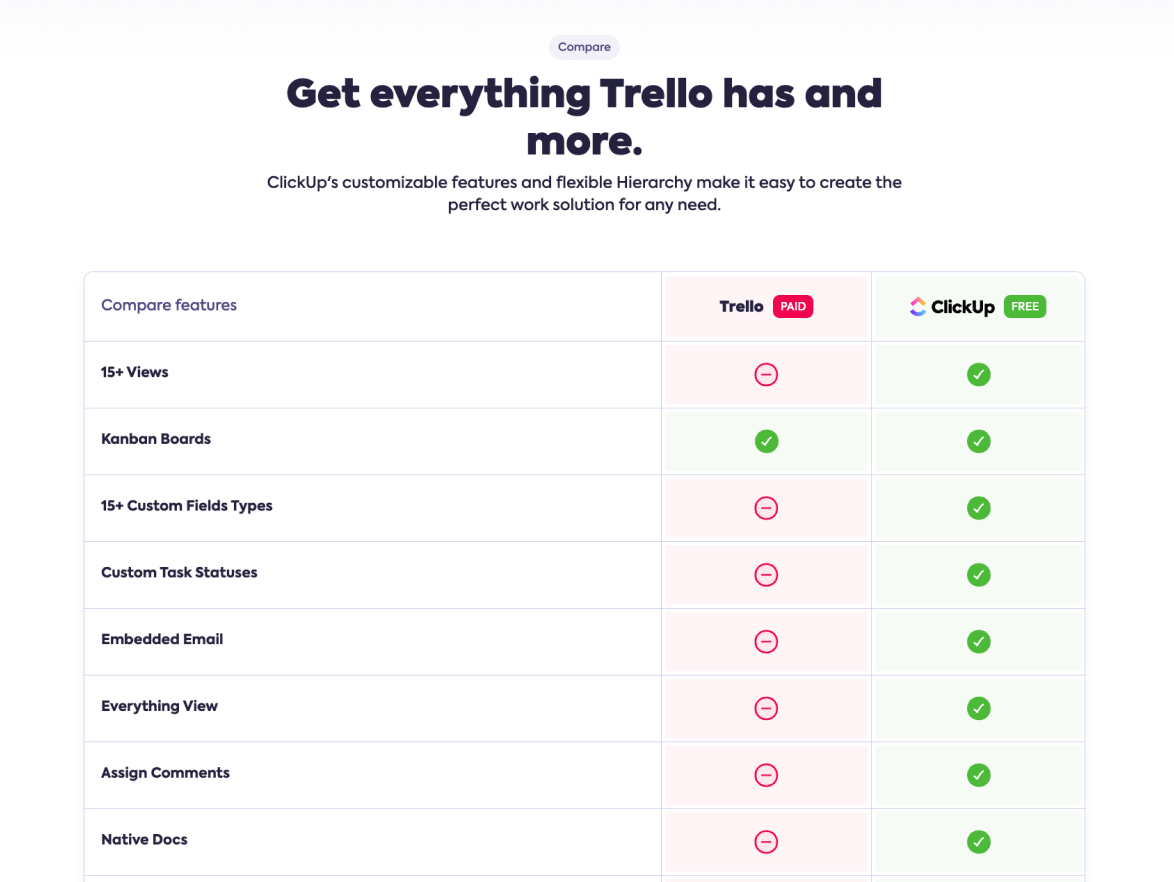
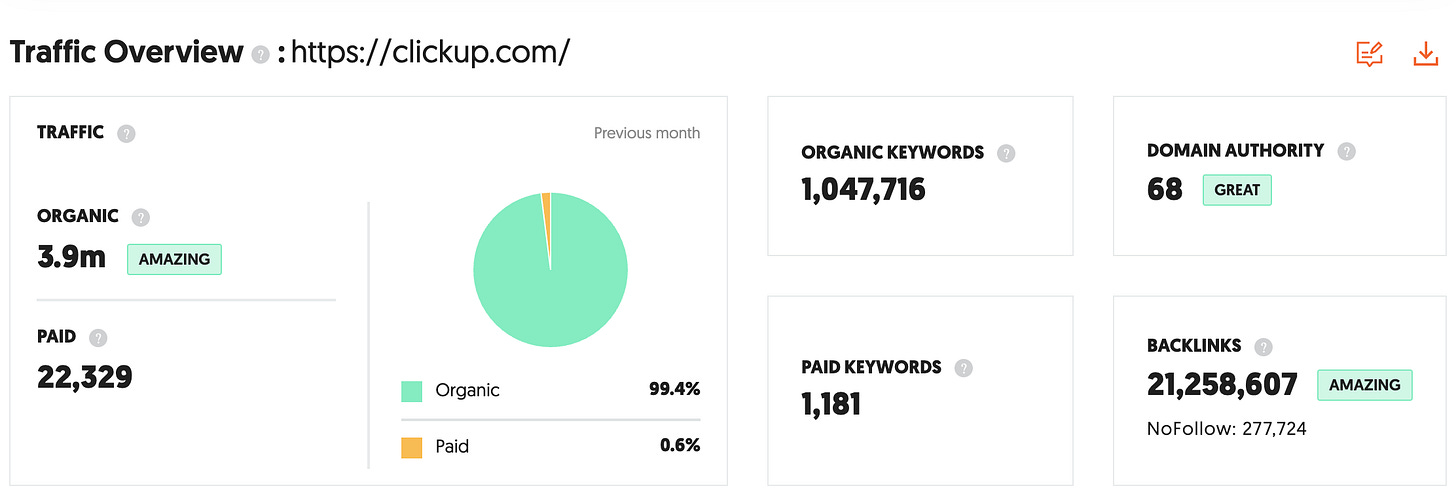





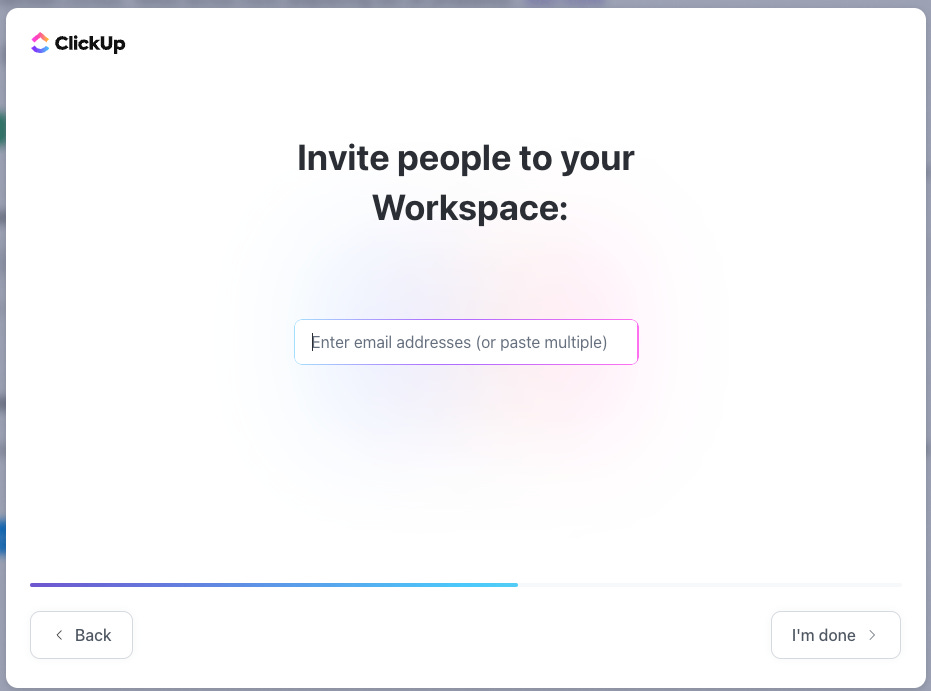

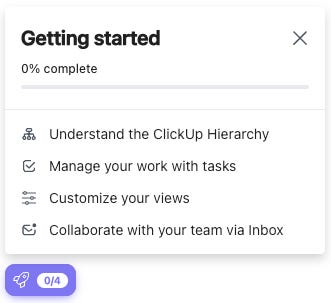





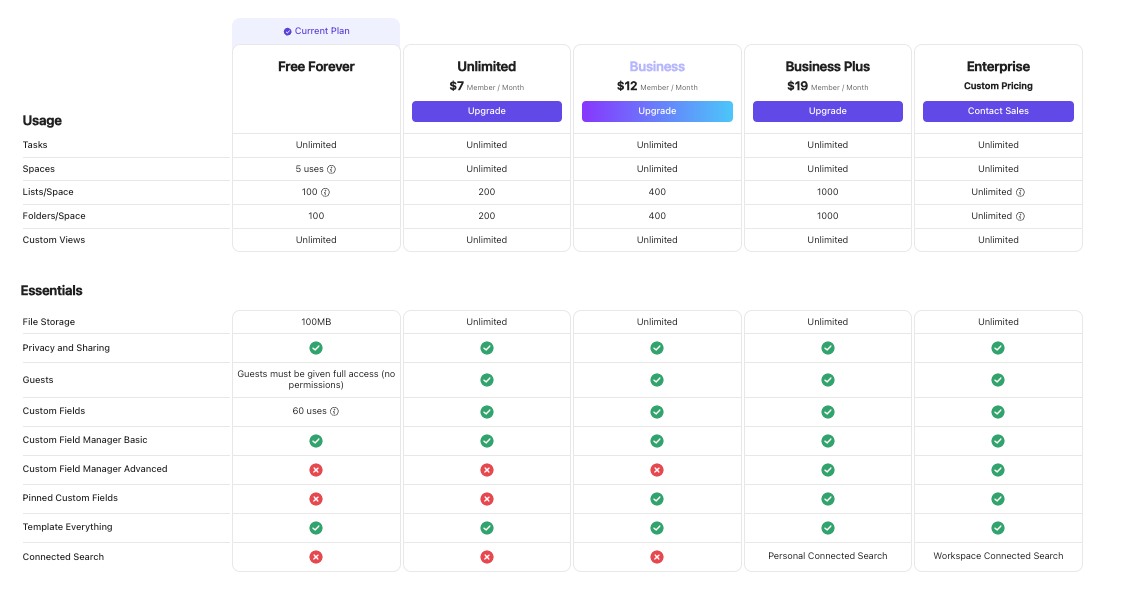


Solid content, Andreas. It's sales and product-led growth focussed, although there are some interesting nuances of customer lifecycle management and engagement in here which resonates with me a lot.
Very useful and informative article!
I feel like Clickup is everywhere. Both on SEO and Youtube ads. It shows how massive they are.
Interesting approach on PQL. Do you happen to know the profile of PQL? When they actually ask sales rep to level up to enterprise?